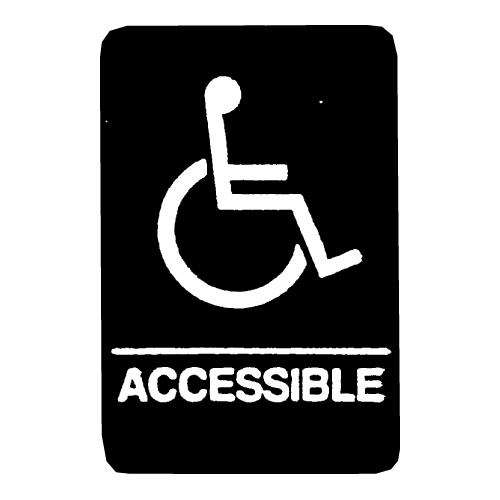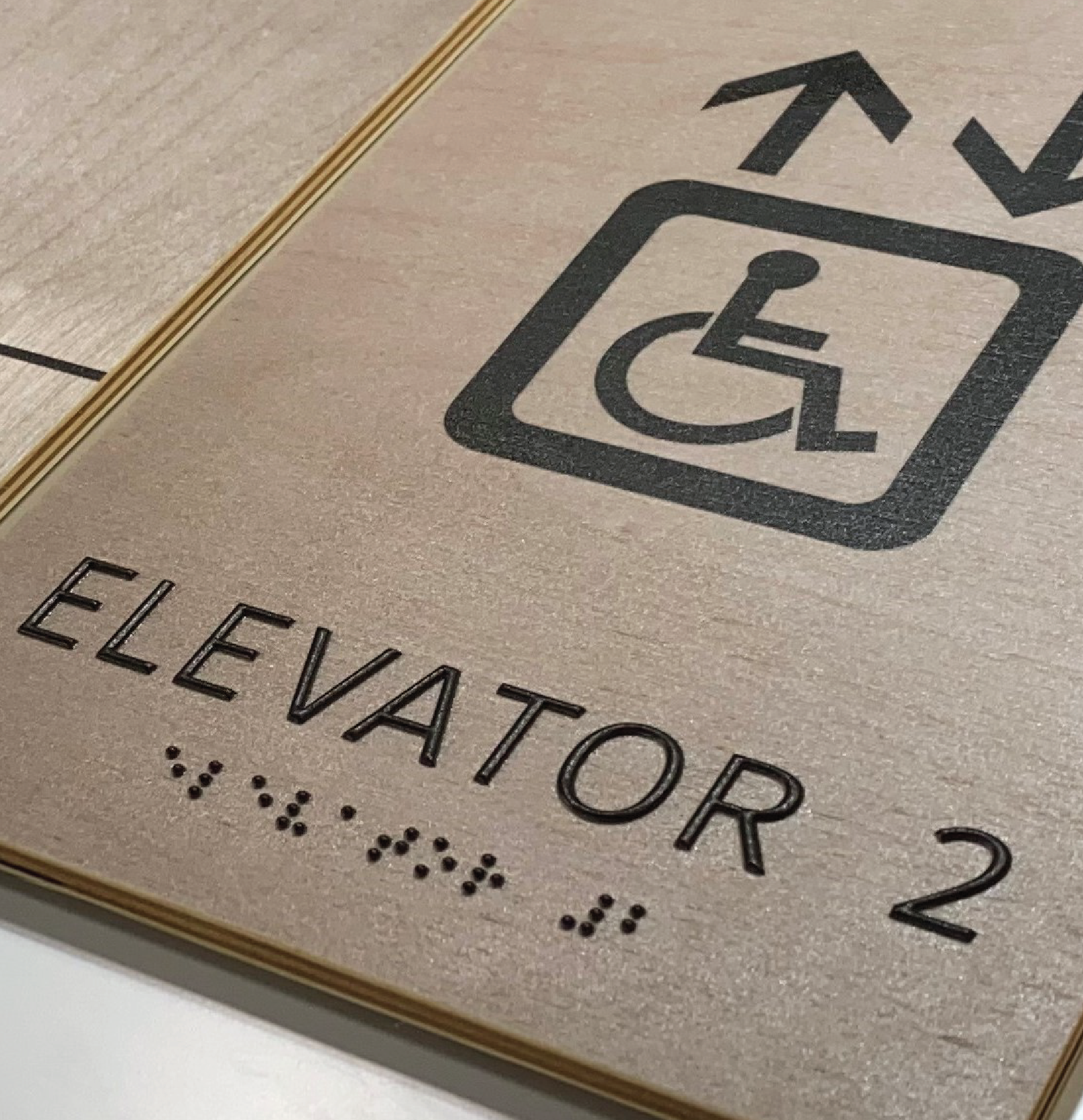ADA Signage: Making Certain Access and Compliance in Public Spaces
ADA signs plays a crucial function in guaranteeing access and compliance within public rooms, significantly adding to an inclusive setting for individuals with disabilities. By sticking to ADA criteria, signage not just facilitates navigation but likewise emphasizes an organization's commitment to variety and equal rights. As we explore the nuances of ADA signs, from responsive features to create details, it's essential to take into consideration just how these elements coalesce to maintain the civil liberties of all users. What are the common risks companies encounter in maintaining compliance, and how can future patterns in signs proceed to drive access forward?
Importance of ADA Signs
In modern-day culture, the relevance of ADA signage prolongs beyond mere conformity with lawful requireds to symbolize a commitment to inclusivity and accessibility for all people. These indicators are necessary in producing atmospheres where individuals with disabilities can browse public rooms with the exact same ease and independence as those without disabilities. By giving clear and standard information, ADA signs makes sure that everybody can access centers, services, and info without barriers.
The relevance of ADA signs lies in its capability to enhance the lifestyle for individuals with impairments by advertising equal access. It removes the challenges that could or else prevent their capability to participate totally in area life. In addition, these indications act as noticeable indications of a company's devotion to variety and equal rights, reflecting broader societal values that promote the rights and self-respect of all individuals.
Furthermore, ADA signs plays an important role in public safety. By assisting people to exits, bathrooms, and other vital centers, it ensures that all individuals, despite physical capability, can leave securely during emergencies. In recap, ADA signs is not simply a regulatory demand yet an effective tool for promoting a comprehensive and fair society.
Crucial Element of Conformity

Placement is essential; indications must be mounted in locations that are reachable and quickly visible. Normally, signage needs to be installed between 48 and 60 inches from the ground to guarantee ease of access for both standing and mobility device customers. Responsive aspects, such as Braille, are vital for individuals with visual impairments, giving essential details in a non-visual layout.
High-contrast colors between the message and background are required to enhance readability for people with reduced vision. The ADA mandates particular comparison proportions to guarantee clarity. In addition, personality size is a vital factor to consider, with minimum height needs dictated by the viewing range to guarantee readability from various angles.
Style Considerations for Accessibility
Creating available signs calls for a precise technique to guarantee it satisfies the demands of all users, especially those with handicaps. The dimension of the text is just as critical, with ADA guidelines recommending a minimum height based on watching distance to make sure legibility.
Contrasting shades between text and history are essential for visibility, especially for people with aesthetic problems. A high comparison proportion helps distinguish the text from its background, improving readability under different illumination conditions. Furthermore, responsive aspects, such as Braille and elevated personalities, are essential for people that are blind or have reduced vision. These aspects must be found at a constant height and position to guarantee easy access and comprehension.
In addition, the positioning of signs plays a considerable role in accessibility. Signs need to be mounted in places that are unblocked and easily obtainable. Making certain that signs is installed at appropriate elevations and angles allows all customers, consisting of those utilizing wheelchairs, to connect with them successfully.
Common Blunders to Prevent

One more prevalent error is the incorrect positioning of signage. ADA guidelines define accurate height and place requirements to make certain that indications are easily visible and obtainable by all people, including those making use of wheelchairs. Disregarding these guidelines not just hampers access but likewise risks non-compliance with legal criteria.
Additionally, inadequate comparison between text and history is a frequent oversight. Sufficient comparison is important for readability, especially for people with low vision. Designers occasionally choose colors that are aesthetically enticing but lack the needed comparison, rendering the text challenging to recognize.
Last but not least, some designers fail to integrate responsive components, such as Braille, which are essential for individuals that are blind. Leaving out these features not only leads to non-compliance with ADA laws yet also restricts gain access to for a section of the populace that relies upon tactile information.
Future Trends in Signage
Developments in modern technology and raising recognition of inclusivity are forming the future trends in signage design. As society ends up being extra conscious of diverse requirements, the assimilation of clever technologies into signage is acquiring grip. Digital signs, for example, is developing to consist of real-time updates and interactive functions, which can be essential in offering dynamic information in public spaces. These signs often include touch screens or gesture-based controls, making it possible for customers to navigate content customized to their details needs.
An additional arising pattern is visit the site the use of enhanced reality (AR) to improve user experience. AR-enabled signs can overlay electronic details onto the physical atmosphere, giving aesthetically impaired individuals with auditory or haptic responses. ADA Signs. This innovation not just improves accessibility however additionally creates an interesting experience for all users
Sustainability is likewise a significant variable influencing signs fads. Environment-friendly materials and energy-efficient lighting options are being focused on to line up with worldwide ecological goals. Additionally, advancements in materials scientific research are bring about the development of more weather-resistant and resilient indications.
Verdict
ADA signs plays a vital role in ensuring availability and conformity within public rooms by including responsive elements, high-contrast colors, and calculated positioning. The adherence to ADA criteria not just promotes secure navigating for people with disabilities however likewise signifies an organization's dedication to diversity and inclusivity. By avoiding common mistakes and embracing future fads, public spaces can proceed to advance these worths, guaranteeing that the legal rights and self-respect of all people are appreciated and supported.
ADA signage plays a vital duty in ensuring availability and compliance within public areas, dramatically visit their website contributing to a comprehensive atmosphere for people with disabilities. As we check out the nuances of ADA signage, from tactile features to create complexities, it's vital to take into consideration just how these components integrate to copyright the civil liberties of all customers.In modern-day society, the significance of ADA original site signs extends beyond mere compliance with legal requireds to personify a dedication to inclusivity and access for all people. By supplying clear and standardized details, ADA signs ensures that every person can access centers, solutions, and details without barriers.
ADA signs plays an important function in ensuring ease of access and conformity within public rooms by incorporating responsive aspects, high-contrast colors, and critical positioning. (ADA Signs)